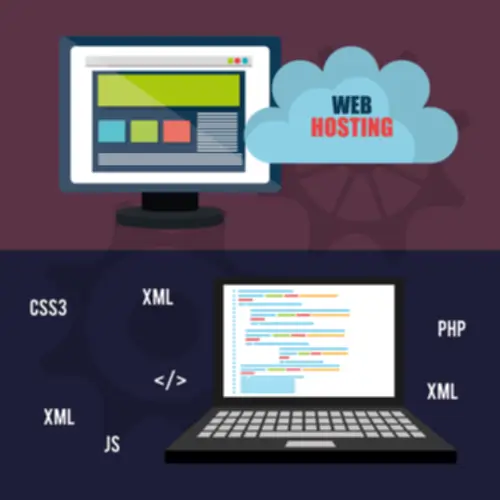Software development
How Does Kubernetes Work? A Complete Information For 2025
Use labels and annotations to supply significant metadata to your objects, such as application names, version numbers, or environment names, which might help with filtering, querying, and debugging. To guarantee excessive availability and scalability, use ReplicaSets or Deployments as an alternative of immediately creating pods. ReplicaSets and Deployments let you define the desired number of replicas on your utility and routinely handle scaling up or down primarily based on demand. Liveness and readiness probes be certain that Kubernetes workloads are working optimally and are ready to handle site visitors. Liveness probes routinely verify if purposes are functioning appropriately, restarting them as necessary. Readiness probes decide whether an application is ready to merely accept requests, holding off visitors until initialization is complete.
To get probably the most out of K8s, implement greatest practices and comply with a custom-configured mannequin to make sure the optimum platform your software build requires. KSPM platforms scan for vulnerabilities across a number of layers, including container runtimes, language runtimes, and the container orchestrator. They can identify outdated or insecure variations of software at any layer, from software dependencies to Kubernetes components.
- This is an efficient example of how constructing a containerized application would possibly require a shift in traditional practices for some growth teams.
- As A Substitute of offering a listing of instructions, developers describe what they want the tip end result to be.
- Roles in RBAC include several permissions that a consumer or service account can perform.
- If you would possibly be already using Kubernetes or are getting production-ready, a customized strategy to configuring your cluster goes a good distance.
When the person defines a liveness check, and a course of meets the requirements, Kubernetes stops the container and begins a new occasion to take its place. Investing in well-structured Kubernetes growth environments improves the standard of your software and empowers your team to innovate quicker and ship extra reliable solutions to finish users. As Kubernetes continues to evolve, staying up-to-date with the latest instruments and best practices might be key to sustaining a aggressive edge. Use Persistent Volumes (PVs) and Persistent Quantity Claims (PVCs) to store knowledge persistently in your cluster. PVs are cluster-wide resources that symbolize physical storage sources, while PVCs are used to request a sure quantity of storage from a PV.

Leverage Gitops Tools To Automate Deployments From Source Control
This is a good instance of how building a containerized application might require a shift in conventional practices for some growth groups. Ward points to microservices and the 12-factor methodology as chief examples of recent application development. Farooq is a cybersecurity researcher specializing in cloud safety, threat intelligence, and Kubernetes security.

Kubernetes Deployment Finest Practices For Handling Stateful Applications
A Kubernetes Service is an summary way to expose a set of pods as a network service. It offers a steady IP handle and DNS name for accessing the pods, at the identical time as pods are created or terminated. Services can be used for each inside communication inside the cluster and exterior access from outdoors kotlin application development the cluster.
The following sections describe the really helpful actions for users to take when organising a cluster. Following these finest practices helps create strong, scalable, and secure Kubernetes growth environments that help environment friendly and dependable application supply. Setting up native preview environments is a important step in the development kubernetes based development process.
Monitor Cluster Resources

Leveraging GitOps on a Kubernetes cluster helps you achieve unified management of the cluster as well as sped-up utility improvement. It is strongly beneficial that you simply leverage advantages from Kubernetes’ autoscaling mechanisms to automatically scale cluster companies with a surge in useful resource consumption. Misconfigurations are one of the prime threats to Kubernetes environments, and they can compromise your organization’s security posture in seconds.
Automating deployments from supply management ensures code changes are systematically propagated, lowering human error. GitOps permits builders to manage infrastructure utilizing a well-recognized Git workflow, which enhances troubleshooting capabilities and captures operational adjustments in opposition to a unified version historical past. Establishing limits protects towards unforeseen spikes or useful resource hogging, making certain cluster stability and environment friendly useful resource utilization. This ensures applications can coexist without affecting one another adversely, selling sustainability and reliability in operations. LimitRange objects may additionally be configured towards namespaces to outline the usual dimension for a container deployed within the namespace. ResourceQuotas can be used to restrict the whole useful resource consumption of all containers inside a namespace.
Its configurability and scalability present organizations with agility but in addition create a big assault floor. In reality, in 2024, 89% of organizations skilled a minimum of one container or Kubernetes safety incident. Kubernetes is the go-to container orchestration platform for concurrently delivering software scalability and agility. In 2024, misconfigured Kubernetes clusters contributed to 45% of security incidents. Kubernetes Security Posture Administration (KSPM) comes into play to handle these challenges and safe Kubernetes workloads without slowing down development. A readiness probe ensures a given pod is up and operating before allowing the load to get directed to that pod.
Plural leverages PR automation to eliminate tedious handbook work, guaranteeing consistency and speed. A StorageClass is used to outline different lessons of storage and their provisioner. Komodor is the Continuous Kubernetes Reliability Platform, designed to democratize K8s experience across the group and allow engineering teams to leverage its full worth. If you want any assistance with managing your Kubernetes tasks, think about Spacelift. It brings with it a GitOps circulate, so your Kubernetes Deployments are synced along with your Kubernetes Stacks, and pull requests present you a preview of what they’re planning to change.
A ReplicaSet ensures that a specified number of replicas (pods) of a particular software are working always. If the number of replicas falls below the desired count because of node failures or different points, the ReplicaSet creates new pods to take care of the desired state. Conversely, if there are too many pods, it scales down by terminating the excess ones.

